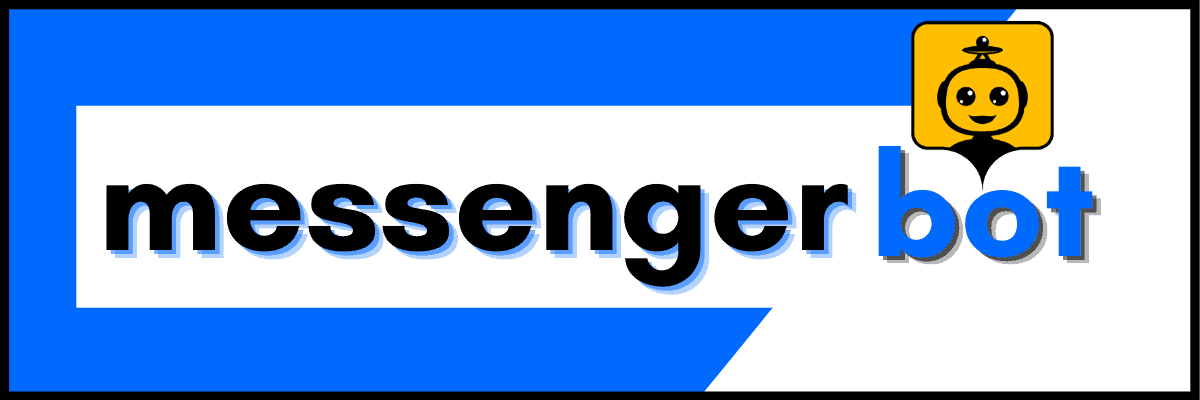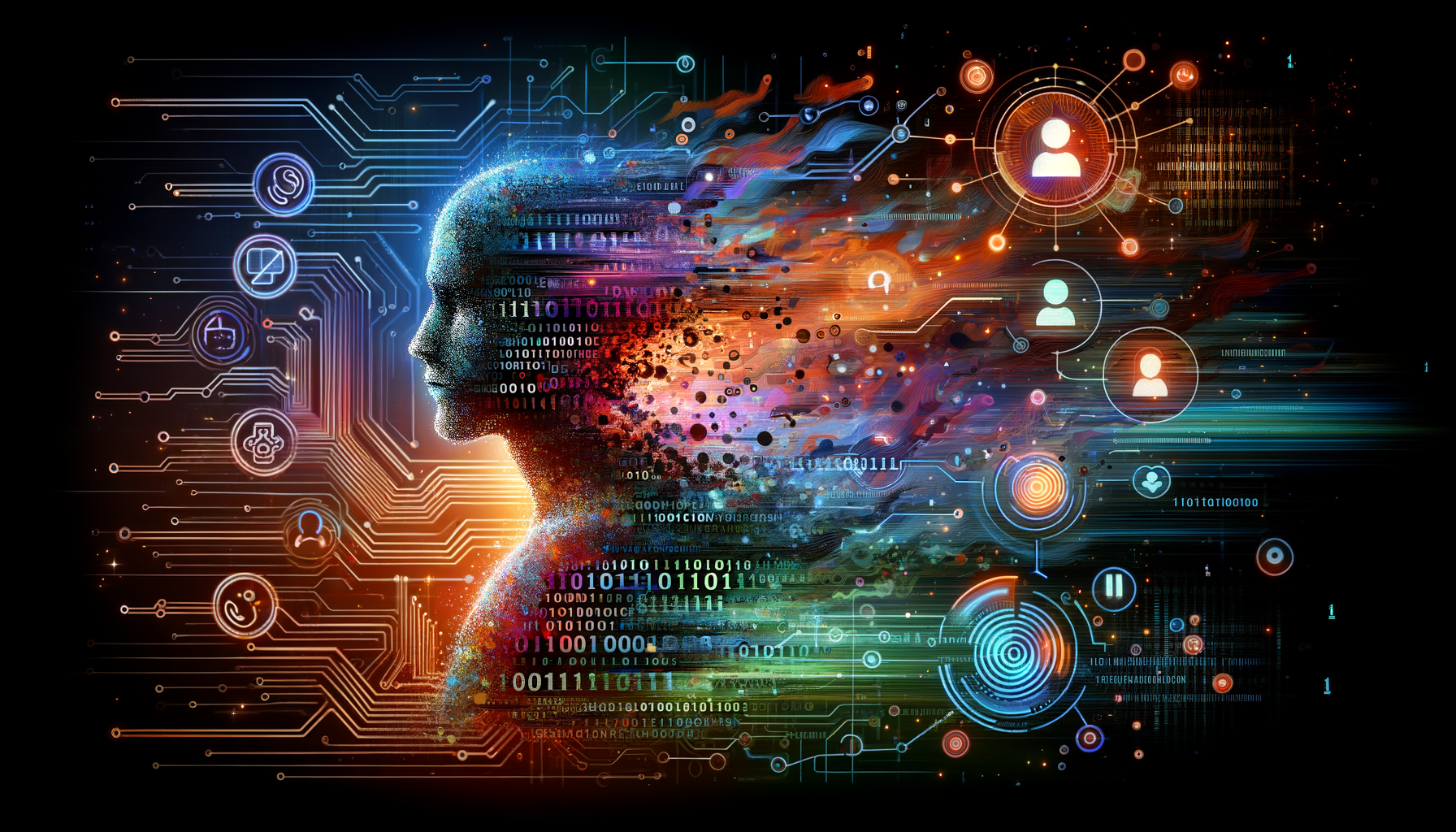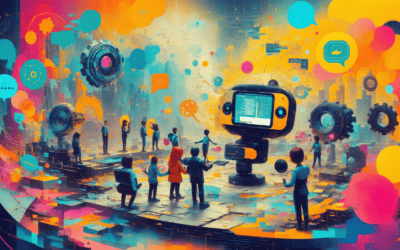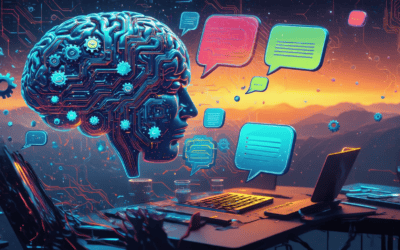In today’s digital landscape, businesses are constantly seeking innovative ways to enhance customer engagement and streamline online interactions. Enter the web-based chatbot, a revolutionary tool that’s transforming the way companies communicate with their audience. These intelligent virtual assistants, powered by advanced AI technology, are not just a trend but a necessity for modern websites. From providing instant customer support to guiding users through complex processes, chatbots in websites are redefining the online experience. This article delves into the world of web-based chat bots, exploring their types, applications, and the cutting-edge AI that drives them. We’ll uncover how these digital conversationalists work, compare top platforms, and provide insights on selecting the perfect chatbot for your website. Whether you’re looking to implement a free online chat bot or a sophisticated AI-driven solution, join us as we navigate the exciting realm of bot chats and their potential to revolutionize your online presence.
Understanding Web-Based Chatbots
Web-based chatbots are revolutionizing online interactions, offering businesses a powerful tool to engage with customers and streamline operations. As a leader in chatbot technology, Messenger Bot is at the forefront of this digital transformation, providing sophisticated solutions for businesses looking to enhance their online presence.
What is a web-based chatbot?
A web-based chatbot is an interactive software application that operates through internet browsers, designed to simulate human-like conversations with users. These AI-powered digital assistants utilize natural language processing (NLP) and machine learning algorithms to interpret user queries and provide relevant responses in real-time. Web-based chatbots are embedded directly into websites or web applications, offering seamless integration without requiring users to download separate software.
These chatbots serve various purposes, including customer support, lead generation, and information dissemination. They can handle multiple interactions simultaneously, providing 24/7 availability and instant responses. Advanced web-based chatbots incorporate sentiment analysis, context awareness, and personalization features to deliver more nuanced and tailored interactions.
Key features of web-based chatbots include:
- Cross-platform compatibility
- Easy integration with existing web infrastructure
- Scalability to handle high volumes of concurrent users
- Ability to learn and improve from interactions
- Multilingual support for global audiences
According to a report by Grand View Research, the global chatbot market size is expected to reach $1.25 billion by 2025, with web-based chatbots playing a significant role in this growth. Industries such as e-commerce, healthcare, and finance are increasingly adopting these technologies to enhance customer experiences and streamline operations.
At Messenger Bot, we offer a range of features that make our web-based chatbots stand out. Our AI-driven technology ensures that your chatbot can engage in natural, context-aware conversations, providing a superior user experience.
Evolution of chatbot technology
The journey of chatbot technology has been remarkable, evolving from simple rule-based systems to sophisticated AI-powered assistants. In the early days, chatbots were limited to predefined responses and could only handle basic queries. However, with advancements in artificial intelligence and natural language processing, modern chatbots have become increasingly intelligent and versatile.
Key milestones in chatbot evolution include:
- 1960s: ELIZA, one of the first chatbots, used pattern matching to simulate conversation
- 1990s: Web-based chatbots emerged, primarily used for customer service
- 2000s: Improved NLP allowed for more natural conversations
- 2010s: Integration of machine learning and AI dramatically enhanced chatbot capabilities
- 2020s: Advanced chatbots with multilingual support, voice recognition, and emotional intelligence
Today, platforms like Messenger Bot are pushing the boundaries of what’s possible with web-based chatbots. Our tutorials showcase how businesses can leverage these advanced features to create engaging, personalized experiences for their customers.
As the technology continues to evolve, we’re seeing the emergence of more sophisticated chatbots that can understand context, remember past interactions, and even anticipate user needs. This progression is transforming how businesses interact with their customers online, making web-based chatbots an indispensable tool for modern digital strategies.
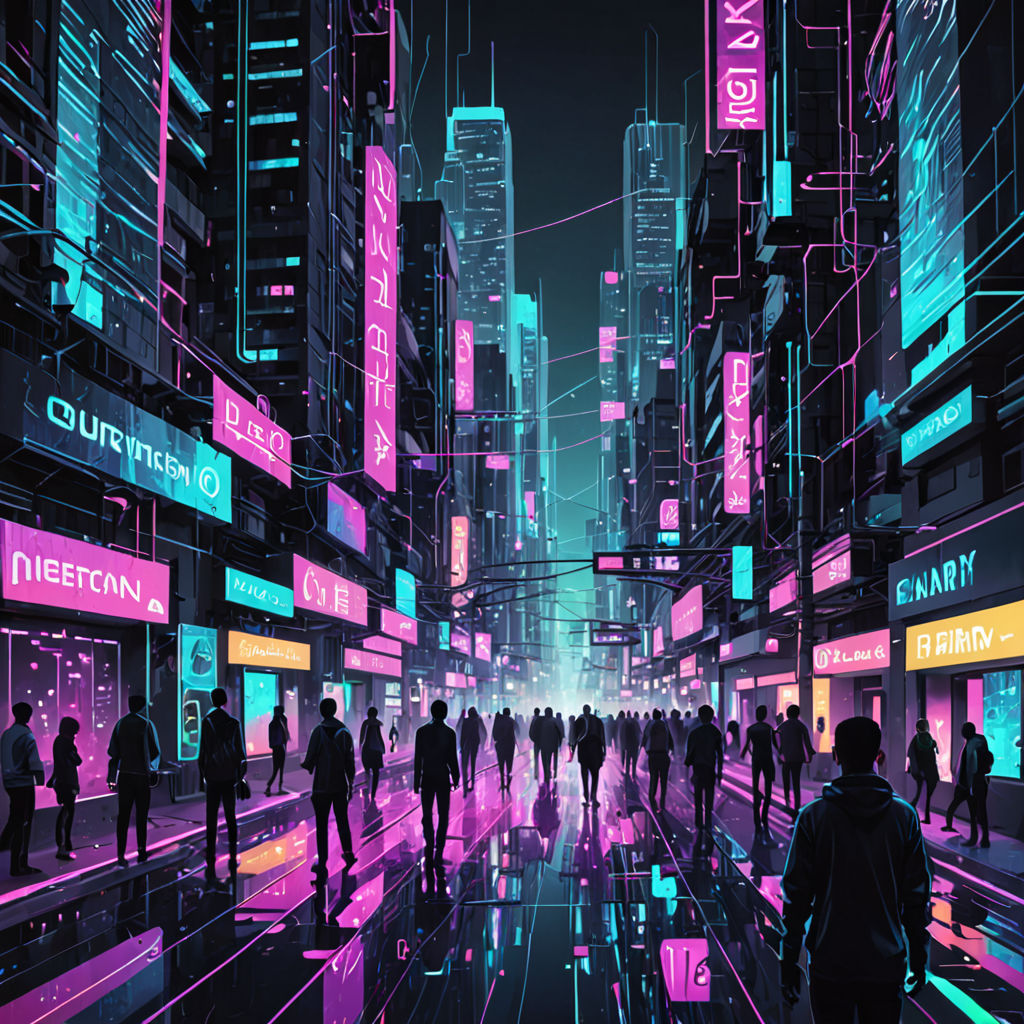
Types and Applications of Chatbots
As a leading provider of web-based chatbot solutions, we at Messenger Bot understand the diverse landscape of chatbot technologies and their applications across industries. Our platform offers versatile solutions that cater to various chatbot types, ensuring businesses can leverage the most suitable option for their needs.
What are the 4 types of chatbots?
Chatbots have evolved significantly, and today we can categorize them into four primary types, each with unique capabilities and use cases:
- Rule-Based Chatbots: These follow predefined rules and decision trees, making them ideal for simple, straightforward interactions. Our features include customizable rule-based chatbots perfect for FAQ handling and basic customer support triage.
- AI-Powered Chatbots: Utilizing Natural Language Processing (NLP) and Machine Learning, these bots understand context and learn from interactions. Messenger Bot’s AI-driven chatbots excel in providing personalized recommendations and acting as sophisticated virtual assistants.
- Hybrid Chatbots: Combining rule-based logic with AI capabilities, hybrid chatbots offer flexibility and scalability. Our platform allows for the creation of hybrid bots that can handle complex customer service scenarios and provide comprehensive e-commerce support.
- Voice-Activated Chatbots: These process and respond to spoken commands, integrating speech recognition technology. While platforms like Alexa and Siri are well-known examples, Messenger Bot focuses on text-based interactions for web and messaging platforms.
Each type of chatbot offers unique advantages, and the choice depends on specific business needs and user preferences. Our tutorials guide users through selecting and implementing the most appropriate chatbot type for their requirements.
Industries benefiting from web-based chatbots
Web-based chatbots have found applications across numerous industries, revolutionizing customer interactions and operational efficiency. At Messenger Bot, we’ve seen firsthand how various sectors leverage our chat bot in website solutions:
- E-commerce: Chatbots assist with product recommendations, order tracking, and handling returns, enhancing the online shopping experience.
- Healthcare: Medical chatbots provide initial symptom assessments, appointment scheduling, and medication reminders, improving patient care accessibility.
- Finance: Banks and financial institutions use chatbots for account inquiries, transaction processing, and personalized financial advice.
- Travel and Hospitality: Chatbots help with bookings, itinerary management, and providing travel information, streamlining the customer journey.
- Education: Educational institutions employ chatbots for student support, course information, and administrative tasks.
The versatility of web-based chatbots makes them invaluable across these industries and beyond. For instance, LivePerson has reported that businesses using their conversational AI solutions have seen up to a 20% increase in conversion rates. Similarly, Drift has found that companies implementing their chatbots have experienced a 10% growth in revenue within the first year.
At Messenger Bot, we’re committed to helping businesses across all sectors harness the power of web-based chatbots. Our pricing options are designed to accommodate organizations of all sizes, ensuring that the benefits of chatbot technology are accessible to everyone.
As the demand for efficient, round-the-clock customer service grows, web-based chatbots are becoming indispensable tools for businesses looking to stay competitive in the digital age. By leveraging our advanced chatbot solutions, companies can enhance customer engagement, streamline operations, and drive growth in an increasingly automated world.
Advanced AI in Chatbot Technology
At Messenger Bot, we’re constantly pushing the boundaries of AI technology to deliver cutting-edge web-based chatbot solutions. Our commitment to innovation ensures that our customers have access to the most advanced AI-powered chat experiences available.
What AI is better than ChatGPT?
While ChatGPT has set a high standard in AI language models, several alternatives offer unique strengths that can be particularly beneficial for web-based chatbots:
- Claude by Anthropic: Excels in nuanced reasoning and ethical considerations, making it ideal for sensitive customer interactions.
- Google Gemini: Leverages real-time data, ensuring our chatbots provide up-to-date information to users.
- Microsoft Copilot: Enhances creativity in content generation, perfect for engaging marketing conversations.
- Perplexity AI: Specializes in comprehensive research, enabling our bots to offer in-depth, fact-checked responses.
- Inflection Pi: Offers a more personalized conversational experience, aligning with our goal of creating human-like interactions.
At Messenger Bot, we integrate these advanced AI models into our chatbot solutions, tailoring them to meet specific business needs. For instance, our e-commerce chatbots might leverage Google Gemini for real-time product information, while our customer service bots could use Claude for nuanced problem-solving.
Comparing AI chatbot capabilities
When it comes to AI chatbot capabilities, it’s crucial to understand how different models stack up. Here’s a comparison of key features that we consider when developing our chatbot solutions:
- Natural Language Understanding (NLU): Models like Google’s LaMDA and our own NLU algorithms excel in understanding context and user intent, crucial for creating seamless conversations.
- Multilingual Support: Our chatbots leverage models similar to Meta AI’s Llama 3, offering robust multilingual support for global businesses.
- Personalization: We incorporate technology akin to Inflection Pi to deliver tailored interactions based on user history and preferences.
- Integration Capabilities: Our chatbots are designed to seamlessly integrate with various platforms, similar to how Microsoft’s Copilot works across different applications.
- Scalability: Leveraging cloud-based infrastructures, our chatbots can handle high volumes of concurrent conversations, much like industry leaders such as Intercom and Zendesk.
At Messenger Bot, we’re not just keeping pace with AI advancements; we’re setting the standard. Our chat bot in website solutions combine the best aspects of these AI models to deliver unparalleled performance. Whether you’re looking for a simple rule-based bot or a sophisticated AI-powered assistant, our platform offers the flexibility and power to meet your needs.
To experience the cutting-edge capabilities of our AI chatbots firsthand, we invite you to explore our tutorials and see how easy it is to implement advanced AI technology on your website. With Messenger Bot, you’re not just getting a chatbot; you’re investing in a future-proof solution that evolves with the rapidly advancing field of AI.
Selecting the Right Chatbot for Your Website
At Messenger Bot, we understand that choosing the right web-based chatbot for your website is crucial for enhancing customer engagement and streamlining operations. With our extensive experience in AI-driven communication solutions, we’re here to guide you through the selection process.
Which chatbot is best for website?
While we believe our Messenger Bot offers unparalleled features and flexibility, it’s important to consider various options to find the best fit for your specific needs. Here’s a breakdown of top contenders in the web-based chatbot market for 2024:
- Messenger Bot: Our AI-powered solution offers advanced natural language processing, multilingual support, and seamless integration with popular platforms. Starting at competitive rates, it’s ideal for businesses of all sizes looking for a scalable, feature-rich chatbot.
- Tidio: At $29/year, it’s a cost-effective option for small to medium businesses, offering a hybrid of AI and human support.
- Botsonic: Priced at $20/month, it’s great for global businesses needing multilingual capabilities.
- Chatbase: At $19/month, it’s suitable for startups and solo entrepreneurs seeking easy setup and GPT-powered responses.
- Intercom: Starting at $74/month, it’s geared towards enterprise-level companies requiring advanced customer segmentation and analytics.
Each of these options, including our own Messenger Bot solution, offers unique features that cater to different business needs. We encourage you to explore our platform’s capabilities through our free trial offer to experience firsthand how it can transform your website’s customer interaction.
Factors to consider when choosing a chat bot in website
When selecting the ideal chatbot for your website, consider these crucial factors:
- Integration Capabilities: Ensure the chatbot seamlessly integrates with your existing systems. Our Messenger Bot, for instance, offers robust integration with popular CRM and e-commerce platforms.
- Scalability: Choose a solution that can grow with your business. Our platform is designed to handle increasing volumes of conversations as your customer base expands.
- AI Sophistication: Look for advanced natural language processing capabilities. Messenger Bot’s AI continually learns from interactions, improving response accuracy over time.
- Customization Options: The ability to align the chatbot with your brand is crucial. We offer extensive customization features to ensure the chatbot reflects your brand voice and visual identity.
- Analytics and Reporting: Comprehensive analytics help you understand customer interactions and optimize performance. Our dashboard provides in-depth insights into chatbot performance and customer engagement metrics.
Additionally, consider emerging trends in chatbot technology:
- Voice-Enabled Interactions: We’re exploring voice capabilities to enhance accessibility and user experience.
- Sentiment Analysis: Our AI can detect and respond to customer emotions, enabling more empathetic interactions.
- Predictive Analytics: We’re implementing features to anticipate customer needs and provide proactive support.
At Messenger Bot, we’re committed to staying ahead of these trends, continuously updating our platform to incorporate the latest advancements in AI and chatbot technology. Our goal is to provide you with a cutting-edge solution that not only meets your current needs but also adapts to future challenges.
To see how our chatbot can revolutionize your website’s customer engagement, we invite you to explore our comprehensive tutorials. These resources will guide you through setting up and optimizing your chatbot, ensuring you leverage its full potential to enhance your online presence and customer service capabilities.

The Mechanics of Web Bots
At Messenger Bot, we’re constantly innovating to stay at the forefront of web-based chatbot technology. Understanding how web bots work is crucial for businesses looking to leverage these powerful tools effectively. Let’s dive into the mechanics behind these digital assistants.
How does a web bot work?
Web bots, including our advanced chatbots, operate through a series of sophisticated processes:
- Web Crawling: Our bots can systematically browse web pages, gathering information to enhance their knowledge base and provide more accurate responses.
- HTTP Requests: They interact with web servers by sending requests, mimicking human browsing behavior but with greater efficiency.
- Data Parsing: Our chatbots excel at parsing various data formats, extracting relevant information to address user queries effectively.
- Task Automation: We’ve programmed our bots to handle repetitive tasks, freeing up human resources for more complex interactions.
- API Integration: Our platform seamlessly integrates with various APIs, allowing for efficient data exchange and expanded functionality.
What sets our Messenger Bot apart is its advanced Natural Language Processing (NLP) capabilities. This technology enables our chatbots to understand and generate human-like text, providing a more natural and engaging user experience.
Additionally, we’ve incorporated machine learning algorithms that allow our bots to continuously improve their performance. This adaptive learning ensures that your chatbot becomes more effective over time, tailoring its responses to your specific audience and business needs.
Key components of chatbot functionality
To deliver exceptional performance, our web-based chatbots rely on several critical components:
- Intent Recognition: Our AI accurately identifies user intentions, ensuring relevant and helpful responses.
- Context Management: Our bots maintain context throughout conversations, providing coherent and personalized interactions.
- Dialogue Management: We’ve implemented sophisticated dialogue flows that guide users through complex queries or transactions.
- Integration Capabilities: Our chatbots seamlessly connect with various business systems, from CRMs to e-commerce platforms, enhancing their utility across your operations.
- Analytics and Reporting: We provide comprehensive insights into chatbot performance, helping you continuously optimize your customer engagement strategies.
These components work in harmony to create a chatbot that not only responds to queries but actively enhances the user experience. For instance, our integration capabilities allow for real-time access to product information, enabling our bots to provide up-to-date details and even process transactions directly within the chat interface.
Moreover, our advanced analytics tools go beyond basic metrics. They offer deep insights into customer behavior and preferences, allowing you to refine your marketing strategies and product offerings based on actual customer interactions.
To see these components in action and understand how they can benefit your business, we invite you to explore our free trial offer. Experience firsthand how our web-based chatbot can transform your customer interactions and streamline your operations.
For those looking to dive deeper into the technical aspects of chatbot implementation, our comprehensive tutorials provide step-by-step guidance. These resources will help you maximize the potential of your Messenger Bot, ensuring you leverage all its advanced features to their fullest.
As we continue to innovate, we’re exploring emerging technologies like voice recognition and sentiment analysis to further enhance our chatbots’ capabilities. These advancements will enable even more natural and empathetic interactions, setting new standards in customer engagement.
By choosing Messenger Bot, you’re not just getting a chatbot; you’re partnering with a leader in AI-driven communication solutions. Our commitment to continuous improvement and cutting-edge technology ensures that your business stays ahead in the rapidly evolving digital landscape.
Popular Chatbot Platforms and Solutions
At Messenger Bot, we’re always keeping an eye on the evolving landscape of chatbot technology. While we’re confident in our advanced features, it’s important to understand the diverse range of chatbot solutions available in the market. Let’s explore some popular platforms and how they compare to our offerings.
Is Alexa a chatbot?
Alexa, developed by Amazon, is not a traditional chatbot but rather an advanced AI virtual assistant. While it shares some similarities with chatbots, Alexa’s capabilities extend far beyond simple text-based interactions. It uses natural language processing, machine learning, and cloud-based computing to understand and respond to voice commands, perform tasks, and control smart home devices.
Recent updates have made Alexa more conversational, allowing for more natural exchanges on various topics. This brings it closer to chatbot-like interactions, but with the added dimension of voice control and integration with Amazon services and third-party applications.
Alexa’s AI-driven system continuously learns and adapts, improving its responses over time. It can set reminders, play music, provide weather updates, and even make purchases, surpassing traditional chatbot capabilities.
While Alexa is impressive, our Messenger Bot solution offers unique advantages for businesses looking for web-based chatbot solutions. We focus on providing a seamless, text-based interaction that integrates perfectly with your website and social media platforms, offering a more tailored approach to customer engagement.
Web based chatbot list: Top options for businesses
When it comes to web-based chatbots, businesses have several options to choose from. Here’s a list of some top contenders in the market:
- Messenger Bot: Our platform offers advanced AI capabilities, seamless integration with websites and social media, and customizable features to suit various business needs.
- Intercom: Known for its customer messaging platform, Intercom offers chatbot functionality with a focus on lead generation and customer support.
- Drift: Specializes in conversational marketing and sales automation, with chatbots designed to qualify leads and book meetings.
- MobileMonkey: Offers multi-channel chatbots for Facebook Messenger, SMS, and web chat, with a focus on marketing automation.
- Chatfuel: Primarily focused on Facebook Messenger bots, Chatfuel is popular among marketers for its ease of use and no-code bot building.
While these platforms offer various features, our Messenger Bot stands out with its advanced AI capabilities, intuitive interface, and comprehensive integration options. We’ve designed our solution to be flexible enough for businesses of all sizes, from startups to large enterprises.
For instance, our natural language processing capabilities allow for more nuanced conversations, reducing the frustration users often experience with less advanced chatbots. This leads to higher customer satisfaction and more effective problem resolution.
Moreover, our platform’s ability to integrate with various business systems means that your chatbot can access real-time data, providing more accurate and up-to-date information to your customers. This level of integration is crucial for businesses looking to provide a seamless customer experience across all touchpoints.
We also pride ourselves on our commitment to continuous improvement. Our team is constantly working on enhancing our AI algorithms and adding new features based on user feedback and emerging trends in the chatbot industry.
To truly understand the power of our web-based chatbot, we encourage you to explore our comprehensive tutorials. These resources will guide you through setting up and optimizing your chatbot, ensuring you leverage all the advanced features we offer.
In conclusion, while there are many chatbot options available, our Messenger Bot combines cutting-edge technology with user-friendly design to provide a superior solution for businesses looking to enhance their customer engagement strategies. We’re confident that our platform can meet and exceed your chatbot needs, providing a powerful tool to drive your business forward in the digital age.
Implementing Chatbots for Enhanced Customer Engagement
At Messenger Bot, we understand the transformative power of chatbots in elevating customer engagement. Our advanced AI-driven chatbot is designed to seamlessly integrate with your website, providing a powerful tool for enhancing customer interactions. Let’s explore how you can effectively implement chatbots to boost your customer engagement strategies.
Best practices for integrating a chatbot website
Integrating a chatbot into your website requires careful planning and execution. Here are some best practices we recommend:
- Define clear objectives: Before implementation, outline specific goals for your chatbot. Whether it’s to improve customer service, generate leads, or streamline operations, having clear objectives will guide your integration process.
- Personalize the experience: Utilize our chatbot’s AI capabilities to offer personalized interactions. By analyzing user data and behavior, your chatbot can provide tailored responses and recommendations, enhancing the overall user experience.
- Ensure seamless design integration: Your chatbot should blend seamlessly with your website’s design. Our customization options allow you to match your chatbot’s appearance with your brand’s aesthetic, creating a cohesive user experience.
- Implement multi-channel support: Extend your chatbot’s reach beyond your website. Our platform supports integration across various channels, including Facebook Messenger and SMS, ensuring consistent engagement across all customer touchpoints.
- Provide easy access to human support: While our AI is highly capable, some situations may require human intervention. Ensure your chatbot can smoothly transfer complex queries to human agents when necessary.
- Continuously optimize and update: Regularly analyze your chatbot’s performance and user feedback. Use these insights to refine your chatbot’s responses and functionalities, ensuring it stays relevant and effective.
By following these best practices, you can ensure that your web-based chatbot not only meets but exceeds customer expectations, driving engagement and satisfaction.
Measuring the success of your web based chat bot
To truly harness the power of your chatbot, it’s crucial to measure its performance effectively. Here are key metrics we recommend tracking:
- Engagement rate: Monitor how often users interact with your chatbot. A high engagement rate indicates that users find the chatbot helpful and accessible.
- Resolution rate: Track the percentage of queries successfully resolved by the chatbot without human intervention. This metric helps gauge the effectiveness of your AI’s problem-solving capabilities.
- Customer satisfaction scores: Implement post-interaction surveys to gather feedback on user experiences. This direct input is invaluable for continuous improvement.
- Conversion rate: If your chatbot is designed for lead generation or sales, measure how many interactions lead to desired actions, such as sign-ups or purchases.
- Average handling time: Assess how quickly your chatbot resolves queries compared to traditional methods. Faster resolution times often correlate with higher customer satisfaction.
- User retention: Monitor how many users return to use the chatbot after their initial interaction. High retention rates indicate that users find value in the service.
Our Messenger Bot platform provides comprehensive analytics tools to help you track these metrics effortlessly. By regularly analyzing these data points, you can identify areas for improvement and optimize your chatbot’s performance over time.
Remember, the success of your web-based chatbot isn’t just about automation; it’s about enhancing the overall customer experience. By focusing on meaningful engagement and continuous improvement, your chatbot can become a powerful asset in your customer service arsenal.
For businesses looking to take their customer engagement to the next level, our AI-powered chatbot solution offers the perfect blend of advanced technology and user-friendly design. With features like natural language processing and seamless integration across multiple platforms, we’re confident that our chatbot can help you create more meaningful and efficient customer interactions.
